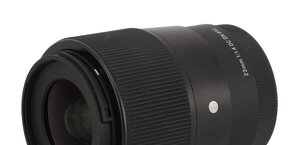Tamron 70-210 mm f/4 Di VC USD
10. Autofocus
If you attach the tested lens to the Nikon D3x, running through the focal range from infinity to the minimum focusing distance and confirming the focus takes about 0.8-0.9 of a second. The process is slower the other way round - the lens can waver or even go in the wrong direction and correct itself only after a while.
In the case of the newer D500 there is no focus hunting and the autofocus remains equally fast no matter what direction. Its speed is similar, amounting to about 0.8-0.9 of a second. It is not especially impressive. The focusing time of a good quality lens of this class should be below 0.5 of a second.
Please Support UsIf you enjoy our reviews and articles, and you want us to continue our work please, support our website by donating through PayPal. The funds are going to be used for paying our editorial team, renting servers, and equipping our testing studio; only that way we will be able to continue providing you interesting content for free. |
- - - - - - - - - - - - - - - - - - - - - - - - - - - - - - - - - - - - - - - - - - - - - - - -
When it comes to the accuracy of the focusing mechanism we didn’t see any serious problems. The autofocus perhaps didn’t hit the right spot all the time, with number of misses reaching 5%, but still in our opinion it is not something you should worry about.
The lens also didn’t need any AF microcalibration. With the lens attached to any of two bodies, used in our test, at most of focal lengths the focus was set where it should. Sometimes we could notice a slight depth of field shift toward longer distances but it wasn’t especially pronounced and the depth of field still encompassed the object of your photo.
| Nikon D500, 135 mm, f/4.0 |
 |
| Nikon D500, 210 mm, f/4.0 |
 |
| Nikon D3x, 135 mm, f/4.0 |
 |
| Nikon D3x, 400 mm, f/4.0 |
 |






